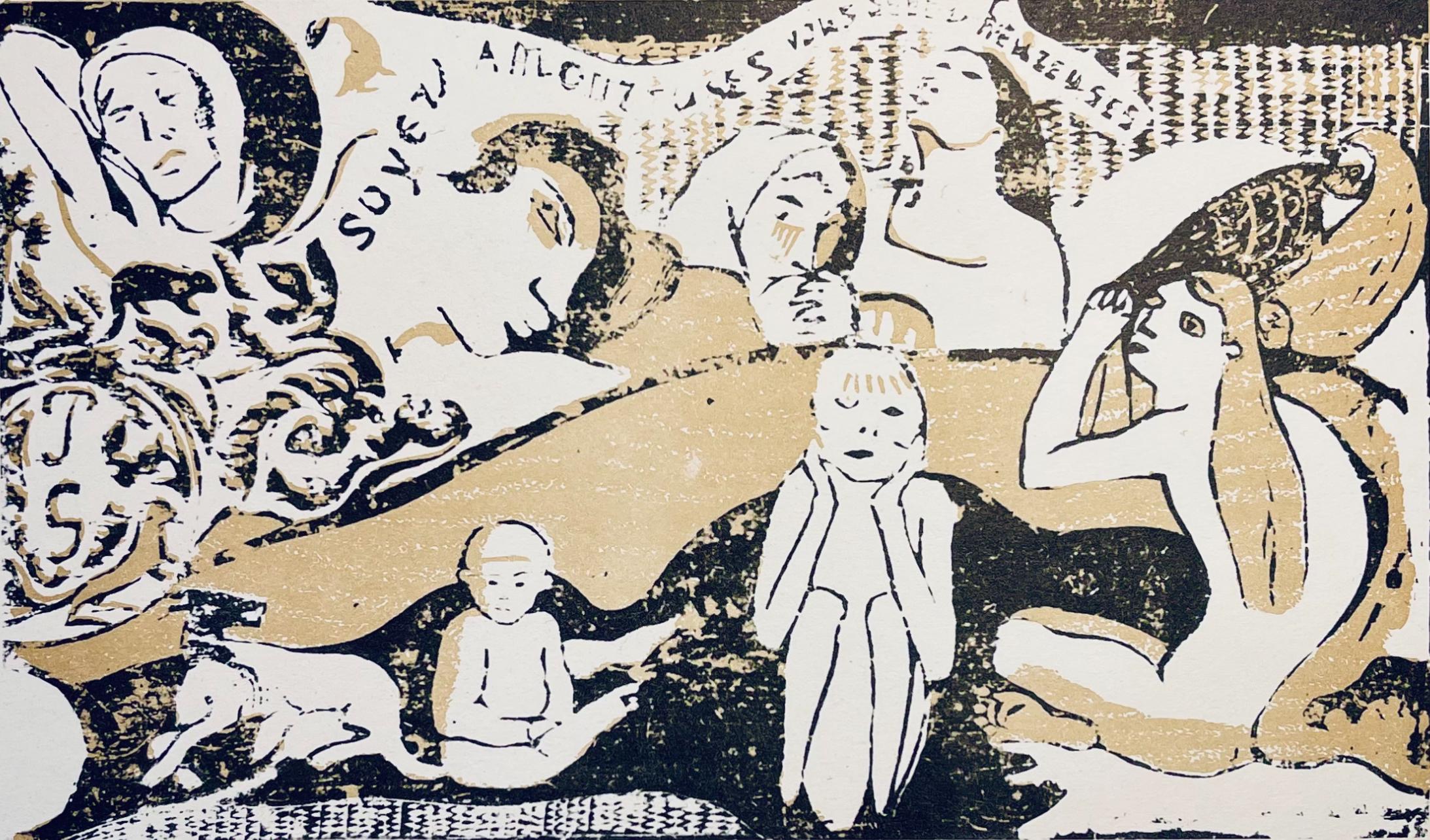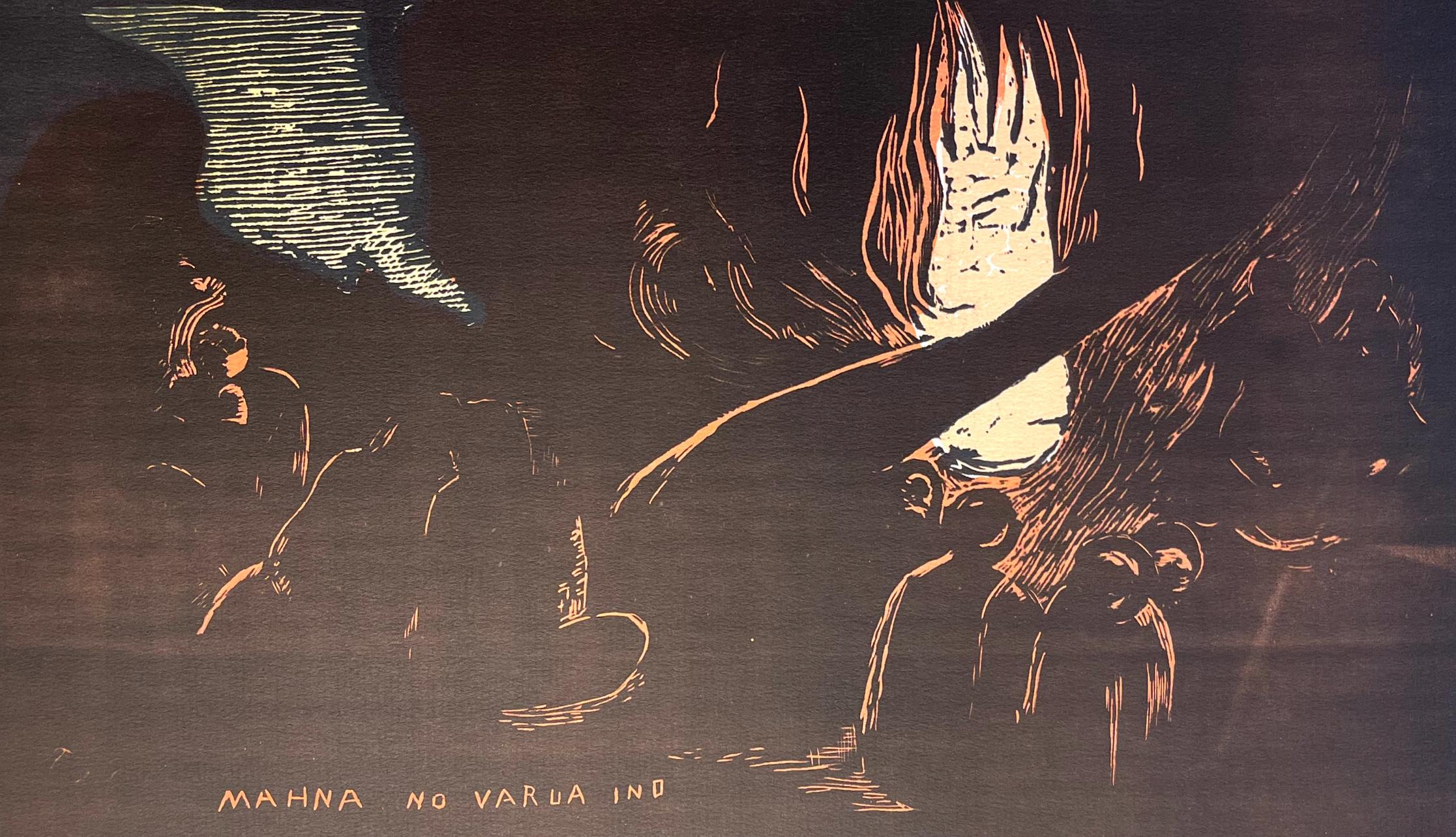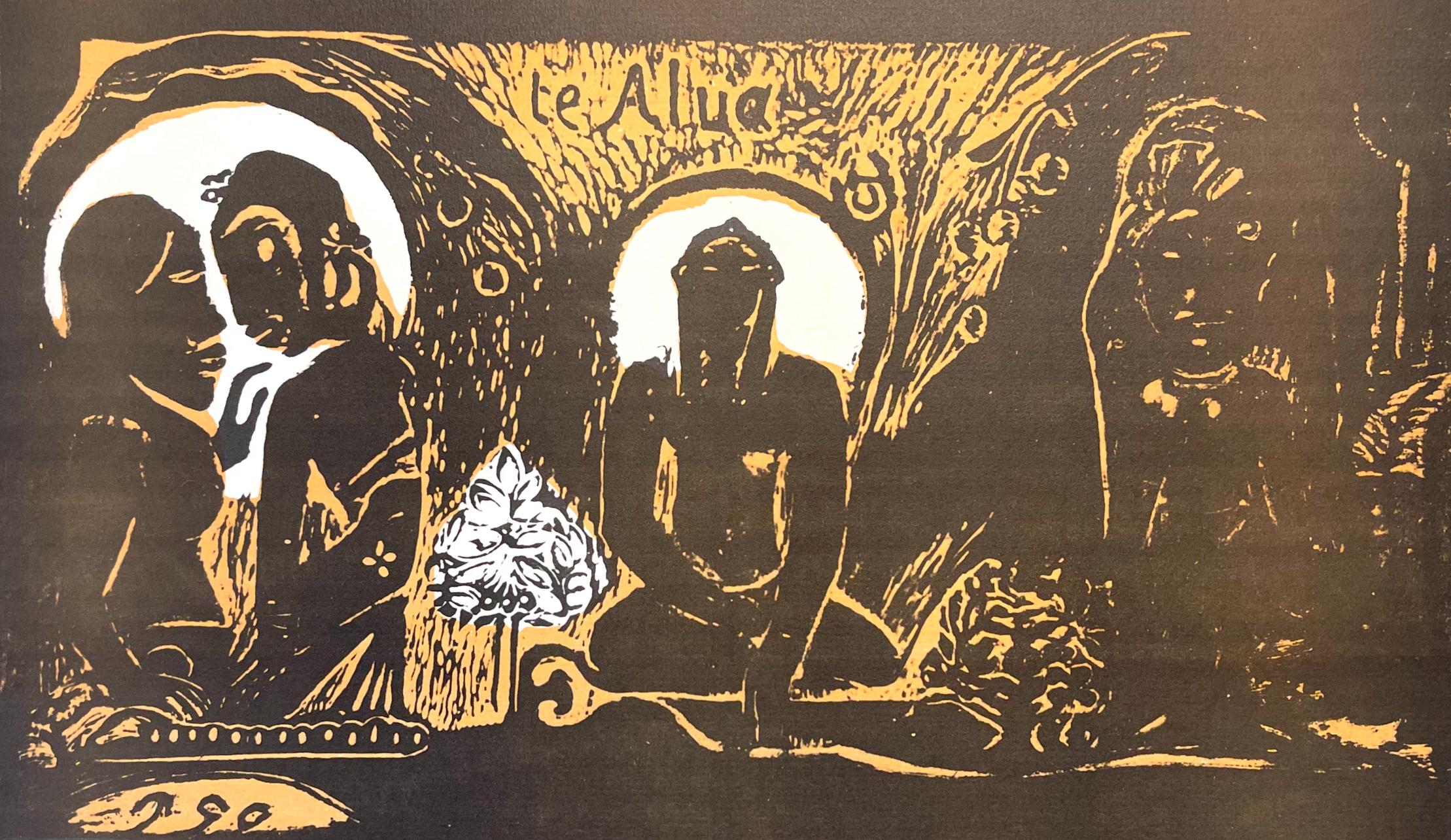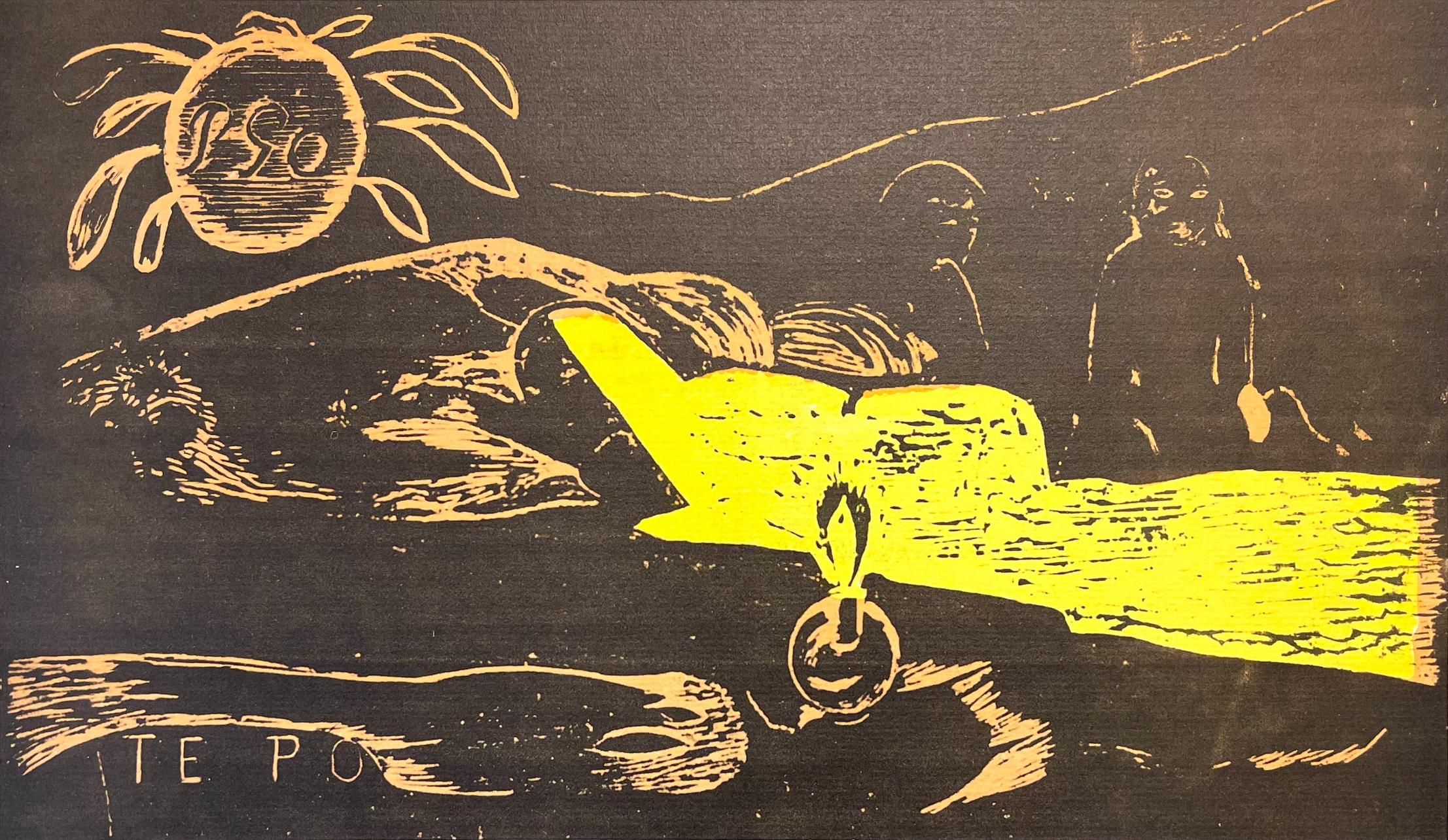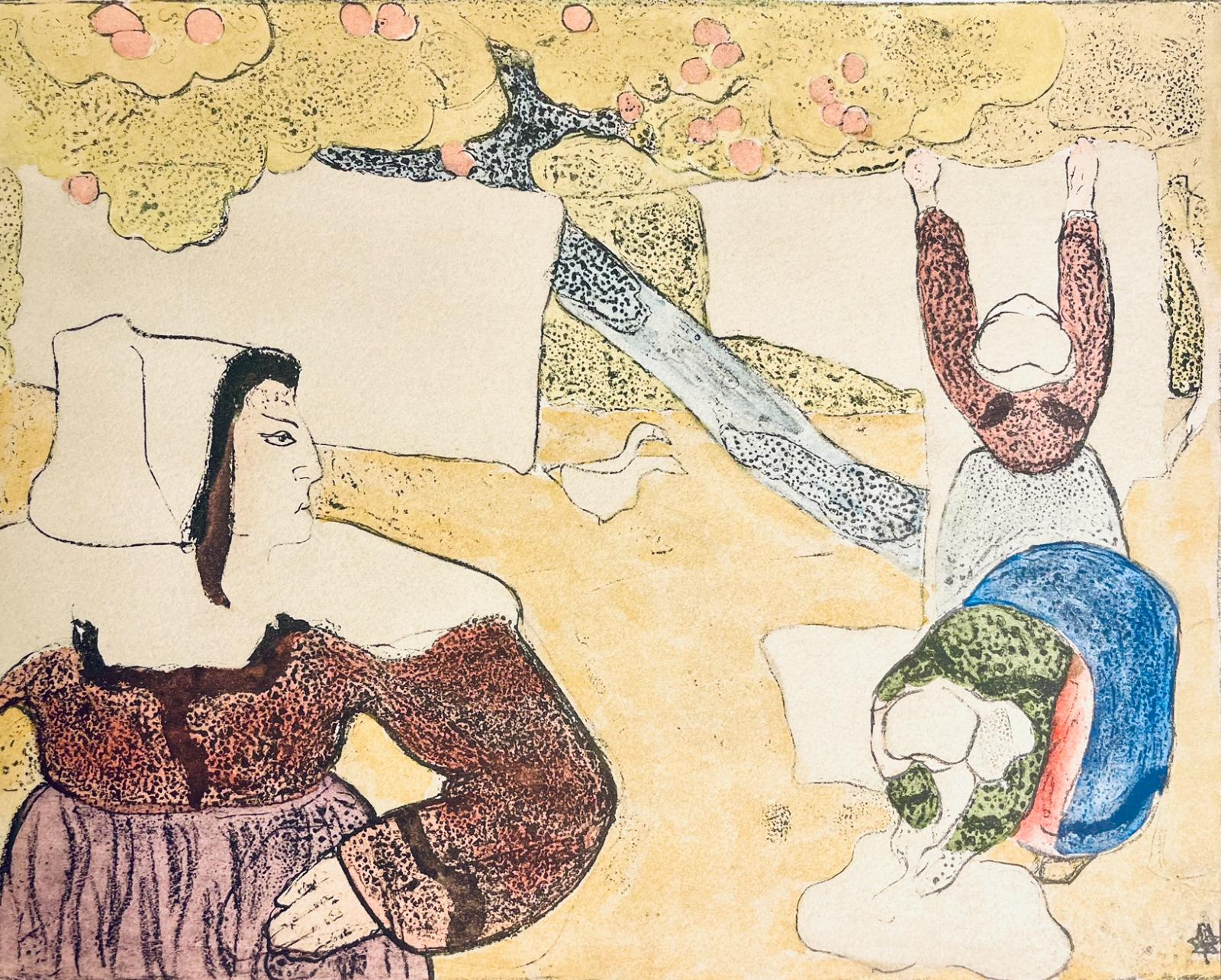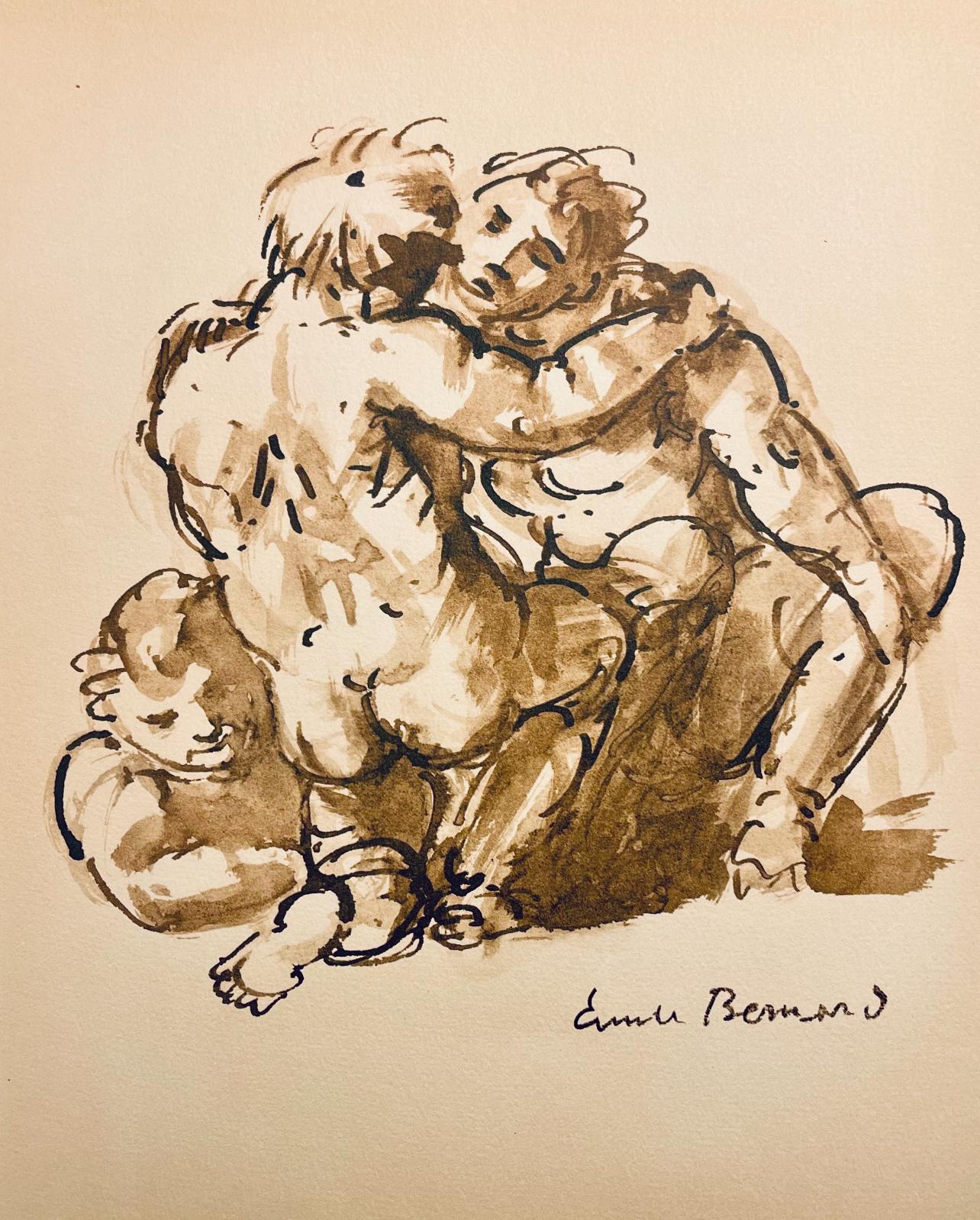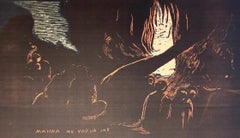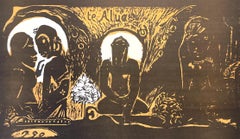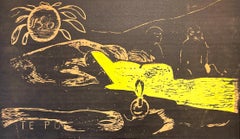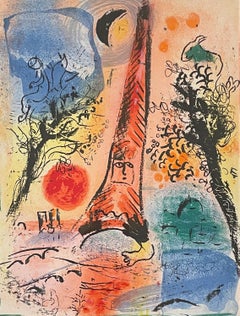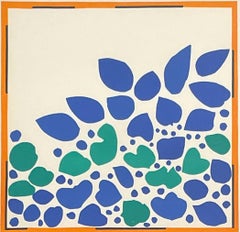Items Similar to Composition (Morane, N° 100), Les Petites Fleurs de St. Françoise, Émile Bernard
Want more images or videos?
Request additional images or videos from the seller
1 of 11
Émile BernardComposition (Morane, N° 100), Les Petites Fleurs de St. Françoise, Émile Bernard1928
1928
About the Item
Wood engraving on vergé d'Arches paper. Inscription: unsigned and unnumbered, as issued. Good condition. Notes: From the volume, Les Petites Fleurs de St. François, 1928. Published by Ambroise Vollard, éditeur, Paris; printed by l'imprimerie Féquet et Baudier, under the direction of Marthe Féquet, Paris, August 27, 1928. Excerpted from the volume (translated from French), The Little Flowers of Saint Francis was translated from Italian by Maurice Beau-Freton, illustrated with woods drawn and engraved by Émile Bernard, and published in M. CM. XXVIII, by Ambroise Vollard, 28, Rue de Martignac, 28, in Paris. Printing was finished in Paris, August 27, 1928, on Marthe Féquet's press. It was taken from this volume: CCCL examples numbered on vergé d'Arches. Examples I, II, and III were watercolored by the hand of Émile Bernard. XLV suites, on Japon blanc nacré, and the woodblocks destroyed. In addition, XXV Hors-commerce examples with brands from A to Y.
Catalogue raisonné references: Harscoet-Maire, L., Morane, D., Émile Bernard 1868-1941: catalogue raisonné de l'oeuvre gravé, 2000, N°. 100; Una E. Johnson Ambroise Vollard, éditeur. New York, 1944, cat. N°. 9; Mary Anne Stevens, Caroline Boyle-Turner, Roland Dorn, Christiaan Vogelaar Emile Bernard: 1868-1941, A Pioneer of Modern Art. Amsterdam, 1990, cat. N°. 156, p. 328.
ÉMILE HENRI BERNARD (1868–1941) was a French Post-Impressionist painter and writer, who had artistic friendships with Vincent van Gogh, Paul Gauguin and Eugène Boch, and at a later time, Paul Cézanne. Most of his notable work was accomplished at a young age, in the years 1886 through 1897. He is also associated with Cloisonnism and Synthetism, two late 19th-century art movements. Less known is Bernard's literary work, comprising plays, poetry, and art criticism as well as art historical statements that contain first-hand information on the crucial period of modern art to which Bernard had contributed.
- Creator:Émile Bernard (1868 - 1941, French)
- Creation Year:1928
- Dimensions:Height: 12.813 in (32.55 cm)Width: 9.813 in (24.93 cm)
- Medium:
- Movement & Style:
- Period:
- Condition:
- Gallery Location:Auburn Hills, MI
- Reference Number:1stDibs: LU1465214846272
About the Seller
4.9
Gold Seller
Premium sellers maintaining a 4.3+ rating and 24-hour response times
Established in 1978
1stDibs seller since 2021
1,064 sales on 1stDibs
Typical response time: <1 hour
- ShippingRetrieving quote...Shipping from: Auburn Hills, MI
- Return Policy
Authenticity Guarantee
In the unlikely event there’s an issue with an item’s authenticity, contact us within 1 year for a full refund. DetailsMoney-Back Guarantee
If your item is not as described, is damaged in transit, or does not arrive, contact us within 7 days for a full refund. Details24-Hour Cancellation
You have a 24-hour grace period in which to reconsider your purchase, with no questions asked.Vetted Professional Sellers
Our world-class sellers must adhere to strict standards for service and quality, maintaining the integrity of our listings.Price-Match Guarantee
If you find that a seller listed the same item for a lower price elsewhere, we’ll match it.Trusted Global Delivery
Our best-in-class carrier network provides specialized shipping options worldwide, including custom delivery.More From This Seller
View AllGauguin, Be in Love and You will be Happy, Gauguin (after)
By Paul Gauguin
Located in Auburn Hills, MI
Woodcut on vélin Utopian paper. Unsigned and unnumbered, as issued. Good Condition. Notes: From the folio, Gauguin, A portfolio of 12 color woodblocks, Paul Gauguin, French, 1848-1903 from the collection of the Museum Of Fine Arts, Boston, 1946. Rendered by Albert Carman (1899-1949); published the Museum Of Fine Arts, Boston and The Studio Publications, Inc., New York and London; printed by Holme Press Inc., New York, in an edition of MMMD. Excerpted from the folio, Paul Gauguin and Emil Bernard at Pont-Aven, Brittany, in 1888, each made a bas-relief, wooden panel to decorate a piece of furniture for a friend. In order to keep a record of their designs, a few inked impressions were made on paper. The illustration at left is a reproduction of a print which is possibly one of the above mentioned. It is further possible that this experiment later gave Gauguin the idea of making woodcuts. Just as his work in painting expressed a revolt against the overemphasis on factual representation of the nineteenth century in favor of decorative pattern and color, so also his woodcuts leaned strongly to the same side of the balance. Ten of the cuts reproduced (all excepting Soyez Amoureuses and Changement de Residence), which constitute the whole of his best known series, were made at Pont-Aven beginning in the fall of 1894, after Gauguin's return from his first trip to Tahiti and after he broke his ankle. They were at first roughly cut with a common carpenter's gouge, and the flat surfaces sandpapered and engraved with a sharp in-strument, perhaps an engraver's burin. A few trial proofs were printed in black ink only. Then the hollows were deepened with a woodcutter's gouge and highlights were added. An edition of thirty to fifty impressions of each subject, with the addition of color blocks (one, two or three), was made by Louis Roy...
Category
1940s Post-Impressionist Figurative Prints
Materials
Woodcut
Gauguin, The Devil Speaks (Mahna No Varua Ino), Gauguin (after)
By Paul Gauguin
Located in Auburn Hills, MI
Woodcut on vélin Utopian paper. Unsigned and unnumbered, as issued. Good Condition. Notes: From the folio, Gauguin, A portfolio of 12 color woodblocks, Paul Gauguin, French, 1848-19...
Category
1940s Post-Impressionist Figurative Prints
Materials
Woodcut
$716 Sale Price
20% Off
Free Shipping
Gauguin, The God (Te atua), Gauguin (after)
By Paul Gauguin
Located in Auburn Hills, MI
Woodcut on vélin Utopian paper. Unsigned and unnumbered, as issued. Good Condition. Notes: From the folio, Gauguin, A portfolio of 12 color woodblocks, Paul Gauguin, French, 1848-19...
Category
1940s Post-Impressionist Figurative Prints
Materials
Woodcut
Gauguin, The Long Night (Te Po), Gauguin (after)
By Paul Gauguin
Located in Auburn Hills, MI
Woodcut on vélin Utopian paper. Unsigned and unnumbered, as issued. Good Condition. Notes: From the folio, Gauguin, A portfolio of 12 color woodblocks, Paul Gauguin, French, 1848-1903 from the collection of the Museum Of Fine Arts, Boston, 1946. Rendered by Albert Carman (1899-1949); published the Museum Of Fine Arts, Boston and The Studio Publications, Inc., New York and London; printed by Holme Press Inc., New York, in an edition of MMMD. Excerpted from the folio, Paul Gauguin and Emil Bernard at Pont-Aven, Brittany, in 1888, each made a bas-relief, wooden panel to decorate a piece of furniture for a friend. In order to keep a record of their designs, a few inked impressions were made on paper. The illustration at left is a reproduction of a print which is possibly one of the above mentioned. It is further possible that this experiment later gave Gauguin the idea of making woodcuts. Just as his work in painting expressed a revolt against the overemphasis on factual representation of the nineteenth century in favor of decorative pattern and color, so also his woodcuts leaned strongly to the same side of the balance. Ten of the cuts reproduced (all excepting Soyez Amoureuses and Changement de Residence), which constitute the whole of his best known series, were made at Pont-Aven beginning in the fall of 1894, after Gauguin's return from his first trip to Tahiti and after he broke his ankle. They were at first roughly cut with a common carpenter's gouge, and the flat surfaces sandpapered and engraved with a sharp in-strument, perhaps an engraver's burin. A few trial proofs were printed in black ink only. Then the hollows were deepened with a woodcutter's gouge and highlights were added. An edition of thirty to fifty impressions of each subject, with the addition of color blocks (one, two or three), was made by Louis Roy...
Category
1940s Post-Impressionist Figurative Prints
Materials
Woodcut
Bernard, Composition, Éloge de Émile Bernard (after)
By Émile Bernard
Located in Auburn Hills, MI
Woodcut on vélin d’Arches paper. Inscription: unsigned and unnumbered, as issued. Good condition. Notes: From the volume, Éloge de Émile Bernard, 1962. Published by Editions d'Art Ma...
Category
1960s Post-Impressionist Landscape Prints
Materials
Woodcut
Bernard, Composition, Éloge de Émile Bernard (after)
By Émile Bernard
Located in Auburn Hills, MI
Woodcut on vélin d’Arches paper. Inscription: unsigned and unnumbered, as issued. Good condition. Notes: From the volume, Éloge de Émile Bernard, 1962. Published by Editions d'Art Ma...
Category
1960s Post-Impressionist Landscape Prints
Materials
Woodcut
You May Also Like
Vision of Paris, Lithograph from Mourlot Lithographe I
By Marc Chagall
Located in Washington, DC
Artist: Marc Chagall
Title: Vision of Paris
Portfolio: Mourlot Lithographe I
Medium: Lithograph
Year: 1960
Edition: Unnumbered
Framed Size: 22" x 19"
Image Size: 12 1/2" x 9 1/2"
Sh...
Category
1960s Fauvist Figurative Prints
Materials
Lithograph
Japanese Woodblock Artist French Lithograph Fauvist Colors School of Paris
By Shungo Sekiguchi
Located in Surfside, FL
Shungo Sekiguchi, (Japanese, 1911-2002):
Lithograph in color on Rives paper
Hand signed in pencil lower right, hand numbered
It appears to be the village of Montmarte in Paris
T...
Category
1950s Post-Impressionist Landscape Prints
Materials
Lithograph
Henri Matisse (after) La Tristesse du Roi (The Sadness of the King)
By (after) Henri Matisse
Located in Washington, DC
Artist: Henri Matisse (after)
Title: La Tristesse du Roi (The Sadness of the King)
Portfolio: The Last Works of Henri Matisse
Medium: Lithograph
Year: 1958
Edition: 2000
Frame Size: ...
Category
1950s Fauvist Landscape Prints
Materials
Lithograph
Lierre
By (after) Henri Matisse
Located in Washington, DC
Artist: Henri Matisse (after)
Medium: Original lithograph
Title: Lierre
Portfolio: The Last Works of Henri Matisse
Year: 1958
Edition: 2000
Framed Size: 17" x 17"
Sheet Size: 14" x 1...
Category
1950s Fauvist Landscape Prints
Materials
Lithograph
Hong Kong urbanscape lithograph
By Ramon Moscardo Fernandez
Located in Barcelona, Barcelona
Josep Moscardó (1953) - Girona Cathedral
Lithograph - Hand signed
Lithograph measures 54x76 cm.
Frameless.
Numbered 12/150
Barcelona, 1953
Painter, sculptor and draftsman of deep-r...
Category
1990s Fauvist Landscape Prints
Materials
Lithograph
$337 Sale Price
51% Off
Miss Ida Heath
Located in Columbia, MO
HENRI DE TOULOUSE-LAUTREC
La Loge au mascaron doré
1948
Lithograph on paper
Ed. 166/740
20.5 x 14 inches
Category
19th Century Post-Impressionist Figurative Prints
Materials
Lithograph
